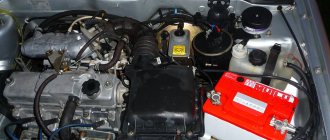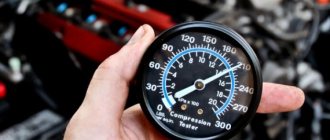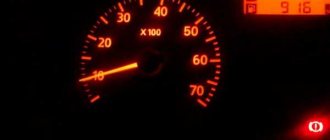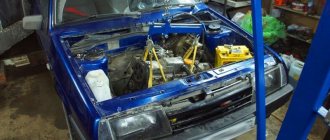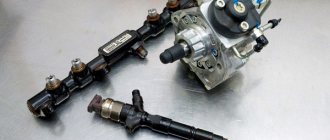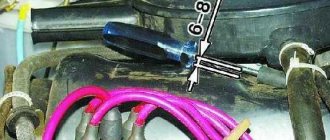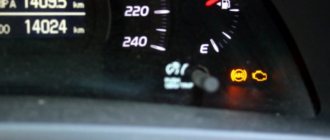The main reasons for shots in the carburetor
When operating their vehicles, in practice, many car drivers quite often encounter the fact that the car shoots into the carburetor. Loud popping noises can be heard either when starting the engine, or when the engine is already warm when driving on the freeway.
Most experts who are well versed in carburetors express a competent opinion that such phenomena are caused by:
- excessively lean fuel-air mixture;
- the ignition is not set according to the instructions;
- malfunctions of the gas distribution mechanism;
- malfunction of the distributor-breaker (distributor);
- The operating phases of the gas distribution mechanism are not adjusted.
Considering that all carburetors in the vast expanse of the CIS are manufactured by enterprises of the Russian Federation, the article will consider the work and pops in the carburetor of VAZ cars, as well as why the 402nd engine of the Gazelle car, known to all motorists, shoots into the carburetor.
What does shooting into the carburetor entail?
Experienced car owners know that if the carburetor shoots when you sharply press the gas, this phenomenon always entails a large set of various unpleasant surprises:
- increased gasoline consumption;
- the running motor overheats greatly;
- the power unit does not develop full power;
- idle speed is unstable;
- the engine shoots into the carburetor, it is difficult to start.
If there is popping in the carburetor, the engine reacts inadequately to the pressed accelerator pedal. All the harmonious tuning of the engine and all its systems is lost. Such moments are accompanied by delays in movement and failures of the gas pedal. The car moves jerkily, jerking under loads, in transient conditions. The engine sneezes and stalls without developing full power.
| Symptom of malfunction | Probable Causes | Debugg |
| Low fuel pressure Fuel pressure drops after pressing the accelerator pedal (increase in engine speed) | Fuel leakage into the fuel return line due to a poor seating of the high pressure regulator valve or weakening of its spring | Replace the high pressure fuel pump |
| Reduced pressure created by the high pressure fuel pump | Replace the high pressure fuel pump | |
| Increased fuel pressure | High pressure regulator valve stuck | Replace the high pressure fuel pump |
| Clogged hose or fuel return tube to the fuel tank | Clean or replace fuel hose or tube |
Such behavior of the engine, popping sounds in the carburetor when pressing the gas sharply, indicate incorrect adjustments of the air-fuel mixture preparation and gas distribution systems. Therefore, it is necessary to carefully understand and re-adjust these two most important units.
Connecting high voltage wires
When the carburetor shoots when you sharply press the gas, you need to carefully check the high-voltage wires of the ignition system. The incorrect order of connecting the wires to the spark plugs leads to the fact that the moment of spark formation does not occur at the end of the compression stroke, as it should be. At the same time, the order of spark distribution to the cylinders during engine operation is disrupted.
Armored wire connection diagram for a standard 4 cylinder carburetor engine
Popping noises in the carburetor when you press the gas sharply indicate that sparking does not occur as each piston approaches the Top Dead Center (TDC), but chaotically. At the same time, the engine starts, although with difficulty, but during its operation the carburetor fires, repeating these pops with a certain frequency.
Troubleshooting involves correctly connecting the high-voltage cables to the spark plugs. When connecting, you should take into account the special markings on the distributor cover. These labels help make connections in the correct order. After connecting the high-voltage wires to the spark plugs corresponding to the established ignition order, the popping sounds in the carburetor immediately stop.
Setting the ignition timing angle of the UOZ
Graph of ignition timing depending on speed for different types of fuel
Incorrectly set early ignition also contributes to the mixture shooting into the carburetor. The spark on the spark plug occurs too early. Ignition of the air-fuel mixture does not occur at the end of the compression stroke, at TDC, but in the middle of the compression cycle or during the movement of the piston to TDC. The mixture of fuel and air does not ignite in a timely manner.
What is an RCD, see here:
The driving force of gases does not perform work with maximum efficiency. A situation arises when the mixture of fuel and air in the cylinders does not burn in a timely manner, with disruption of the synchronization and ignition process. As a result, early combustion of the mixture is expressed by a lumbago or pop.
With late ignition, popping sounds are heard in the muffler as combustion continues as the intake valve begins to reopen on the next compression stroke. In addition, the burning out remains of the mixture ignite the next volume of fuel charge entering the engine combustion chamber from the carburetor to the intake manifold at the moment of fuel intake.
Due to such an increased volume of combustion material, due to disruption of the fuel combustion process, the engine overheats. Early or late ignition can often be determined by the condition of the removed spark plugs. For white spark plugs with carbon deposits, it is necessary to check the ignition timing by adjusting it by turning the distributor, focusing on the printed scale.
For clarity, see how experts set the ignition
Malfunctions of the distributor, Hall sensor, switch
Distributor malfunctions
A malfunction of the distributor itself is also often the main reason why the carburetor shoots.
The most common breakdowns of the breaker-distributor:
- breakdown of the distributor cover;
- cracks in the lid, ingress of water, dirt;
- runner clogged;
- wear of receiving contacts;
- violation of contact of high-voltage wires at the point of their attachment.
Often, a malfunction of the Hall sensor prevents the engine from starting and shoots into the carburetor . The reason lies in excessive wear of the distributor bearings. The precise engagement of the drive gear and the correct location of the distributor-chopper in its normal place have a strong influence on the functions of the ignition system.
If you cannot find the reason why the carburetor is shooting, you need to try changing the distributor. Often this operation gives a positive result. After carrying out a thorough check, it is best to install a new breaker-distributor on the machine. It has been proven in practice that after this, localization of ignition system faults occurs much more accurately and quickly.
To figure out why the carburetor is shooting, you should perform similar actions with the ignition system switch. If it breaks, the formation of a spark is disrupted, which is not supplied at the precisely specified moment. The chaotic flow of sparks is accompanied by loud bangs and shots.
Lean air-fuel mixture
Entering the combustion chamber of the engine, the lean mixture creates shots into the carburetor. The reasons for this phenomenon lie in the fact that a lean mixture burns much more slowly than a normal mixture. A new injection stroke has already begun, but the lean mixture still continues to burn.
After exhaust, during the intake stroke, the intake valve opens, a new portion of the mixture is supplied, and the previous mixture is still burning. The new mixture also ignites. Due to an excess of gases, they find a way out and escape with a loud bang, similar to a gunshot. A lean mixture most often leads to overheating of the internal combustion engine.
A lean air-fuel mixture is formed for several reasons:
- various malfunctions of dosing systems;
- clogging of air and fuel jets;
- leakage, contamination of fuel lines;
- fuel pump failure;
- gasoline level in the float chamber;
- air leakage at any point in the fuel system;
- accelerator pump malfunction.
Very often, to normalize the operation of engine systems, simply cleaning the carburetor with the Carbicleaner cleaner is enough. After cleaning, you should replace the filters and properly configure all dosing systems.
Timing belt faults
The gas distribution mechanism plays an important role in the coordinated operation of the entire car engine. In order to prevent failure of the timing belt, it is necessary to monitor the degree of its wear and make timely replacement. Sometimes it happens that the carburetor is working properly, the quality of the mixture is normal, the ignition is in order, but shots are fired into the carburetor. The reasons are a stretched, worn, incorrectly installed timing belt.
Due to a poor-quality belt, phase failure occurs during operation of the gas distribution mechanism. Due to such a failure, the fuel mixture is ignited when the intake valves open. It is necessary to debug the timing belt and accurately align the belt to the marks.
Valve clearances
Violations of adjustment, too small thermal gaps between the pushers and camshaft cams provoke shots into the carburetor. The reasons for this phenomenon are obvious: the valves are too tight, so they cannot close normally. The burning mixture escapes through the gaps, shoots and pops.
Many drivers deliberately reduce the clearances when adjusting. There is a misconception that in order to reduce engine noise and the knocking of cold and hot valves, it is necessary to set smaller clearances. At first, the engine will indeed make less noise, but a warm engine will sneeze and clap loudly.
timing belt
Shots in the carburetor often appear after repairs at a service station. A crookedly installed mechanism belt is the reason for this. Needless to say, this negatively affects the entire gas distribution process. A phase failure occurs and the fuel assembly burns out untimely.
Timing belt
The problem is “treated” by correctly aligning the belt to the marks. If the rubber has lost its original properties, then it is advisable to replace such a part with a new one.
The reasons for shooting into the carburetor and troubleshooting are clearly visible in the table.
| Cause of malfunction | What's happening | What to do |
| High voltage wires are connected in the wrong order | The spark will not jump on the compression stroke as expected, but on other strokes, since the sequence of operation of the engine cylinders will not be observed. Moreover, the internal combustion engine can even start and run for a while, periodically shooting into the carburetor. | In such a situation, you should reinstall the wires from the spark plugs into the distributor cover starting from the installation mark on it counterclockwise in the order: 1-3-4-2. |
| Ignition too late | Late ignition, when the spark jumps too late during the compression stroke and combustion of the working mixture occurs throughout the entire subsequent power stroke, and not just during compression. At the moment when the intake valves begin to open, the old fuel mixture still burns out and ignites a new portion of the fuel assembly coming from the intake manifold and carburetor on the intake stroke. There is a pop in the carburetor. A side effect is engine overheating and white spark plugs. | Set the correct ignition timing |
| The distributor is faulty | A “broken” cover, slider, high-voltage wires, or faulty Hall sensor can lead to improper engine operation in different modes. It is also possible that the bearing holder is loose or the ignition distributor bearing itself is worn out. | In such a situation, to quickly diagnose a malfunction, the easiest way is to temporarily replace the distributor with a known good one. |
| The ignition system switch is faulty | Correct and timely sparking in the ignition system is disrupted. | Replace the switch with a known good one. |
| The timing belt jumped 1-2 teeth | This situation is possible after repairing the engine, replacing the timing belt, or when the timing belt is loose or worn. Again, combustion of the fuel mixture occurs when the intake valves are open, which is accompanied by a “shot” into the carburetor. | The timing belt needs to be reinstalled. |
| Lean fuel mixture | If a lean fuel mixture enters the engine, flashes (popping and sneezing) in the carburetor are possible. The reason for this is the slow combustion of the lean mixture. While the intake stroke begins in the cylinder after the exhaust stroke (the intake valve opens), the combustion of the fuel mixture continues in the combustion chamber. The incoming fresh combustible mixture ignites, and combustion spreads through the intake manifold in the form of a flash, causing popping noises in the carburetor mixing chamber. | In such a situation, you should check the fuel level in the float chamber, the cleanliness of the air and fuel jets. |
Article on the topic: Rules for storing car tires without rims
The engine sneezes into the carburetor on a UAZ reason
Tell. There were problems with the UAZ Hunter UMZ 4218. After rebuilding the engine, it began to sneeze when pressing the gas and refused to accelerate above 60 km/h. There was K-126. The head was sharpened to 92. They temporarily installed a K-151a, naturally it is not suitable for this engine, but the UAZ made it home. I installed a new DaAZ 4178. 30. Everything is super, it just started getting warm around the city. And there was a strong dip in 1st gear, to the point where the car stalled. Then it began to heat up quite quickly, in traffic jams and even just at traffic lights (on the highway it’s 80 degrees, but as soon as you stop it overheats.) The distributor was replaced, but the failure remained. Then it started to get very hot, with the electric fan, that is, I was driving along the highway with it constantly on and the temperature was 90 degrees. Then the cylinder head gasket blew (white smoke came out of the silencer). Then when it was cold there was no smoke. I took it to the service center. The head was opened and the gasket was not broken. The gasket was replaced, the failure remained. The valves were adjusted, the distributor was twisted, they even adjusted the distributor (where the oil pump is) by 1 tooth, the coil and switch were changed. As a result, it sneezes in any gear and gets warm. The pump and thermostat were changed, the radiator was blown out. Tell me what this could be? This failure will be felt even when the car is standing. You need to check the fuel line - immediately change the fine filter and pump up the gasoline - it should flow well - even after pumping. Then adjust the OZ - with the car running in neutral, turn the distributor and press the gas pedal with your hand - at some speed your failure will be detected, turn it until it disappears, the engine should run without hesitation and failure at any speed up to the pedal to the floor. Well, the most common reason for twitching is bad gasoline. The thing is that we need to adjust the SOP for our gasoline every time after filling; this is done by all sorts of devices for adjusting the SOP - automatic and manual. Those. if there were no jerks, you filled in gasoline or switched the tank, and they appeared - drain this rubbish and fill it somewhere in Rosneft with a normal one - especially, this applies to the 92nd.
PS There is also an overheated fuel pump - it seems that Baker's pumps do not suffer from overheating. I have one like this and haven’t noticed any overheating. Overheating can be treated with a wet cloth. If the dips disappear after a wet rag, you need to change the gaskets between the block and the pump so that it doesn’t get so hot - there’s been a lot of writing on the forum on how to do this.
This failure will be felt even when the car is standing. You need to check the fuel line - immediately change the fine filter and pump up the gasoline - it should flow well - even after pumping. Then adjust the OZ - with the car running in neutral, turn the distributor and press the gas pedal with your hand - at some speed your failure will be detected, turn it until it disappears, the engine should run without hesitation and failure at any speed up to the pedal to the floor. Well, the most common reason for twitching is bad gasoline. The thing is that we need to adjust the SOP for our gasoline every time after filling; this is done by all sorts of devices for adjusting the SOP - automatic and manual. Those. if there were no jerks, you filled in gasoline or switched the tank, and they appeared - drain this rubbish and fill it somewhere in Rosneft with a normal one - especially, this applies to the 92nd. PS There is also an overheated fuel pump - it seems that Baker's pumps do not suffer from overheating. I have one like this and haven’t noticed any overheating. Overheating can be treated with a wet cloth. If the dips disappear after a wet rag, you need to change the gaskets between the block and the pump so that it doesn’t get so hot - there’s been a lot of writing on the forum on how to do this.
The main line is normal, the fine filter is new, I only refuel at Rosneft. It seems that by turning the distributor we achieved stable operation at idle, but under load it sneezes, the fuel pump pumps, the carb does not overflow. And it’s not just that I’m having failures now, but I’m sneezing. I also shot at the silencer and at the carb, and it’s not clear why it overheats. I'm sinning on the engine, maybe there was a mistake during assembly by 1 tooth?
The main line is normal, the fine filter is new, I only refuel at Rosneft. It seems that by turning the distributor we achieved stable operation at idle, but under load it sneezes, the fuel pump pumps, the carb does not overflow. And it’s not just that I’m having failures now, but I’m sneezing. I also shot at the silencer and at the carb, and it’s not clear why it overheats. I'm sinning on the engine, maybe there was a mistake during assembly by 1 tooth?
Sneezes in the carb - early ignition. At graduation - later. Well, maybe they made a mistake. What kind of ignition do you have? If with DH, then simply turn the fastening die counterclockwise and turn the distributor clockwise (if earlier). If it is contact ignition, then turn the drive gear. But I think it won’t come to the end. You turn it right by degree - turn it, step on the pedal, press it, listen - and you will notice that the sneeze will disappear at a certain moment. If not, see above.
14 liters, all the sneezes and puffs into the muffler and into the carb are a thing of the past. pah-pah
help, same reason!! The UAZ sneezes when I’m walking along the highway at 70-80 km/h in 4th gear, we thought about the ignition, the ignition on 2 hall sensors is underwater, we changed the block, we changed the sensor (trammer) the same thing, 1st 2nd 3rd gear everything is fine, no failures and in the forest too, as soon as you turn on 4 it starts to sneeze and puff, you let off the gas a little and catch the moment it goes to 4 but you start to accelerate again it sneezes the same way!! The carb was set to 151, it was rebuilt, the spark plugs are black!! maybe there is a problem with them?! or what else could it be? in 3rd gear you keep it to the floor along the highway through forested areas, everything is fine, you put it in 4th and then accelerate and it starts to sneeze, I also changed the gasket on the manifold because the old one was torn and was leaking.
Source
Why does the carburetor shoot, reasons?
The carburetor is shooting, what to do.
Characteristic shots in the carburetor are a fairly common malfunction of cars with such a power system. The problem makes itself felt when the engine starts and as it gains speed. Let's find out why the carburetor shoots.
Concurrent symptoms
ATTENTION! A completely simple way to reduce fuel consumption has been found! Don't believe me? An auto mechanic with 15 years of experience also didn’t believe it until he tried it. And now he saves 35,000 rubles a year on gasoline! Read more"
As a rule, the situation is accompanied by a number of other signs:
- unstable operation of the internal combustion engine in idle mode;
- difficulty starting;
- loss of power and throttle response of the power unit;
- rapid overheating of the motor;
- increase in fuel consumption.
Note also that in such a situation the car accelerates poorly. When you press the accelerator pedal, jerks, dips, and delays appear. The car jerks a lot, especially in transition modes. The power plant does not so much work as “sneeze.”
High-voltage wiring and OZ
It is recommended to start diagnostics with the ignition system. All armored wires must be thoroughly tested, because disorganization of the placement of spark plug outlets will easily lead to chaos in the supply of sparks to the cylinders of the engine unit. It is when the high-voltage wires are mixed up and unstable operation of the internal combustion engine is observed, shooting into the carb, etc.
Why does the engine fire the carburetor?
There are special marks on the ignition distributor cover. They are intended to indicate the exact wiring diagram. This point with the spark plug outputs must be checked, and only then proceed to the settings of the OZ.
If early ignition is set, then shooting into the carburetor should definitely be present. This can be explained simply - the impulse passes too quickly, the fuel assembly is ignited not at the moment the compression process is completed, but in the phase when the piston approaches TDC.
A knocked down OZ creates a situation where the mixture burns out untimely and the combustion process is disrupted. The lumbago increases and can also radiate into the exhaust system (with late ignition). The worst thing is that the burning out of the remaining fuel assemblies spreads to fresh charging doses. This mixture enters the engine from the carb during startup, and it begins to overheat greatly.
You can determine the settings of the OZ that have been disrupted by the candles, or rather, by their color. A white coating on them or the appearance of soot will be a signal for the driver, who must check and set the correct ignition by adjusting the OZ. The distributor is adjusted by turning it.
The distributor itself can also become a reason to shoot into the carb. Often it deteriorates or problems arise due to a breakdown of the cover, failure of the slider or armored wiring at the points of their connection.
It is recommended to check the magnetic regulator and pay attention to the distributor bearing. During the diagnostic process, it would be correct to use an initially functional distributor and carry out diagnostics on it. This will allow you to quickly and accurately localize device problems. The same actions are carried out with the switch, because if it malfunctions, the entire spark formation process is disrupted.
Lean fuel assembly
Operating a carburetor on a lean fuel assembly often becomes a source of popping noise a priori. This is due to the combustion process itself, which in this case occurs slowly. Symptoms of this type of malfunction are similar to ignition failures. The poor fuel assembly burns after a new intake stroke begins.
A lean fuel assembly is almost the main reason for overheating of the power plant. The pop is created first in the intake, and only then the sound is transmitted to the mixing chamber of the carb.
The root causes of the formation of a lean fuel assembly must be sought in the carburetor itself, fuel lines, filters or in the fuel pump. As a rule, this is due to air penetration into the system or clogging of the jets, which are the main components - dispensers.
It is also important to be able to check at what level the fuel is in the float chamber. Often something similar happens due to the curvature of the float.
At the same time, it would be a good idea to test the accelerator pump. This part of the carburetor can also play a role when shots appear. This is especially true if it shoots when you press the gas pedal.
Carburetor accelerator pump
If the problem is related to the carburetor and its components, then sometimes it is enough to treat the inside of the device with an aerosol spray to clean the metering devices. After that, all that remains is to properly adjust everything. It would also be a good idea to replace the fuel filters.
timing belt
Shots in the carburetor often appear after repairs at a service station. A crookedly installed mechanism belt is the reason for this. Needless to say, this negatively affects the entire gas distribution process. A phase failure occurs and the fuel assembly burns out untimely.
The problem is “treated” by correctly aligning the belt to the marks. If the rubber has lost its original properties, then it is advisable to replace such a part with a new one.
The reasons for shooting into the carburetor and troubleshooting are clearly visible in the table.
Cause of malfunctionWhat is happeningWhat to do
| High voltage wires are connected in the wrong order | The spark will not jump on the compression stroke as expected, but on other strokes, since the sequence of operation of the engine cylinders will not be observed. Moreover, the internal combustion engine can even start and run for a while, periodically shooting into the carburetor. | In such a situation, you should reinstall the wires from the spark plugs into the distributor cover starting from the installation mark on it counterclockwise in the order: 1-3-4-2. |
| Ignition too late | Late ignition, when the spark jumps too late during the compression stroke and combustion of the working mixture occurs throughout the entire subsequent power stroke, and not just during compression. At the moment when the intake valves begin to open, the old fuel mixture still burns out and ignites a new portion of the fuel assembly coming from the intake manifold and carburetor on the intake stroke. There is a pop in the carburetor. A side effect is engine overheating and white spark plugs. | Set the correct ignition timing |
| The distributor is faulty | A “broken” cover, slider, high-voltage wires, or faulty Hall sensor can lead to improper engine operation in different modes. It is also possible that the bearing holder is loose or the ignition distributor bearing itself is worn out. | In such a situation, to quickly diagnose a malfunction, the easiest way is to temporarily replace the distributor with a known good one. |
| The ignition system switch is faulty | Correct and timely sparking in the ignition system is disrupted. | Replace the switch with a known good one. |
| The timing belt jumped 1-2 teeth | This situation is possible after repairing the engine, replacing the timing belt, or when the timing belt is loose or worn. Again, combustion of the fuel mixture occurs when the intake valves are open, which is accompanied by a “shot” into the carburetor. | The timing belt needs to be reinstalled. |
| Lean fuel mixture | If a lean fuel mixture enters the engine, flashes (popping and sneezing) in the carburetor are possible. The reason for this is the slow combustion of the lean mixture. While the intake stroke begins in the cylinder after the exhaust stroke (the intake valve opens), the combustion of the fuel mixture continues in the combustion chamber. The incoming fresh combustible mixture ignites, and combustion spreads through the intake manifold in the form of a flash, causing popping noises in the carburetor mixing chamber. | In such a situation, you should check the fuel level in the float chamber, the cleanliness of the air and fuel jets. |
Video: when the carburetor shoots
Tired of paying fines?
There is an exit! Forget about fines from cameras! An absolutely legal new product - NANOFILM, which hides your license plates from IR cameras (which are installed in all cities). More details at the link.
- Absolutely legal (Article 12.2.4).
- Hides from photo and video recording.
- Installs independently in 2 minutes.
- Invisible to the human eye, does not deteriorate due to weather.
- 2 year warranty
General manifestation of the malfunction
Popping noises in the carburetor may appear under the following circumstances:
- after engine repair;
- there was an accident or a pothole on the road;
- tuning or simply adjustment of the carburetor was carried out;
- the car has high mileage.
In this case, a malfunction may occur in the following cases:
- when you press hard on the gas pedal;
- after parking, with a cold engine;
- on the go under load;
- when trying to start the engine.
Depending on the reason that caused the carburetor to shoot, popping noises can appear either abruptly or gradually, increasing in intensity daily. Operating a car when the engine sneezes into the carburetor, in addition to discomfort for the driver, can lead to the need for major engine repairs.
Troubles with the carburetor and their solutions
Let's broaden our horizons, gentlemen, motorists. From time to time, VAZ cars delight us with their reliability, but still, let’s be realistic. The domestic carburetor does not last forever and can also fail
.
Which happens quite often. From time to time it is enough to replace the filters; otherwise, you will need to completely disassemble the VAZ 2109 carburetor.
When you disassemble the VAZ 2109 carburetor, faults become visible to the naked eye. Then, cleaning the VAZ 2109 carburetor may come in handy.
Excellent flushing and cleaning of the VAZ 2109 carburetor, done on time, can seriously extend its service life
carburetor on
your car
.
Correct adjustment of the VAZ 2109 carburetor prevents many malfunctions of the VAZ 2109 carburetor.
Taking good care of the carburetor will extend its service life, as well as the life of the car itself. Remember that this depends on many factors, including the level of fuel quality.
There is one more unpleasant thing:
Failure in the carburetor VAZ 2109
What is it and how to deal with it? If dips appear when the speed is set, this may be caused, for example, by problems with the accelerator pump. Make sure there is no air leakage under the carburetor of your car
.
- Make sure the air filter is reliable - if it gets dirty, it can cause many malfunctions in the carburetor. And while the VAZ 2109 carburetor is being cleaned, this must be monitored.
- When you are convinced that everything indicated is in order, the fuel line and the fuel pump are working properly, you can continue the diagnosis.
- Next on the list of likely candidates is the accelerator pump. He's also going to be checked.
- The carburetor damper may not open completely when the choke is turned off.
VAZ carburetors are a narrow mechanism. From time to time, people simply cannot stand it and take a new one, without ever understanding the circumstances of the malfunction that caused the “failures.”
But by and large, in fact
, failure when pressing
the gas pedal
of a VAZ 2109 carburetor is one of the very common signs on “Nines”.
For convenience, we invite you to watch the video where an expert demonstrates how to solve the problem of starting failure:
Another video recorded by Nail Poroshin about failures when pressing the gas pedal:
Make sure the fuel level is reliable. This is also possible due to one of the following circumstances:
- Use a gas pump to pump up gasoline. Remove the cover from the carburetor. Measure the level. It should not be more than 26 mm.
- We control the gap between the gasket and the floats with the cover upside down, it is 1 mm.
- Then it is checked how the needle valve is sealed.
If all this does not produce results and you are unable to find the reason, we recommend taking the car to a car service center.
VAZ-2109. The car WILL NOT START! Along with this, Shoots and Sneezes!
Records based on the Random principle:
- Japanese subcompact crossover Nissan...
- Tuning UAZ Patriot will make the car better and more unique
- Geely does not plan to bet on...
- Lada Xray appeared in the lineup...
- Mercedes s-class in the back of w221...
- Photos leaked onto the Internet...
the most interesting articles for you, selected according to important requests:
VAZ 2109 (carburetor) does not start, what should I do? You woke up to the alarm clock and got ready for work. Everything has been taken away, you still have an hour before work starts...
VAZ 2109 (carburetor) jerks while driving, what should I do? Jerking while driving is an unpleasant moment for drivers. We have already raised this issue throughout...
How to repair a VAZ 2109 carburetor It so happened in the domestic country that, thanks to pricing and tax policies, a foreign car...
Critical sensors in the VAZ 2109 (carburetor) When troubleshooting, servicing and repairing, many people forget about the sequence of critical sensors that are installed on…
Installing a turbine on a VAZ 2109 (carburetor) will expand the power of the Lada Samara, a car common on Russian roads. The first "Nine"...
Carburetor repair VAZ 2107 price iphone This control is applicable to all engines of the “good family” of VAZ cars (models 2101-2107 and their…
Repairing cars with your own hands VAZ 2109 Repairing a VAZ with your own hands. The muffler of a car becomes unusable over time, why during...
High voltage wires
When carrying out repairs affecting the ignition system, the high-voltage wires may be connected incorrectly. In this case, the spark will not occur in time with the compression cycle, resulting in popping sounds. Even if the engine starts, its power is not enough to move the car.
To diagnose a malfunction, you should check the connection of the wires from the spark plugs to the distributor. You should push off from the mark located on the cover. The connection of high-voltage wires must correspond to the car model. For example, the location of high-voltage wires in the VAZ 2109 is shown below.
Correct connection of high-voltage wires VAZ 2109
Malfunction of the ignition distributor
A faulty distributor can cause improper ignition of the mixture in the combustion chamber. Its main faults include:
- breakdown of the lid;
- slider failure;
- oxidation at the attachment point of high-voltage wires, causing energy loss.
To identify the distributor as the culprit of the popping noise, it is recommended to install a known-good device in its place. If the shooting disappears, further diagnosis of the ignition distributor malfunction will be required.
Can a bang in the muffler damage the engine?
Shots in the exhaust system are considered a consequence of failures in engine adjustment and a violation of its settings.
This indicates the need to check three systems - ignition, timing and fuel supply.
If you delay repairs, there is a high risk of engine damage.
Untimely restoration can lead to damage to the integrity of the valves, malfunction of the exhaust system, and even a car fire.
The only positive aspect of “sneezing” is the ability to detect a malfunction in advance and take action.
During the repair process, a comprehensive check of the internal combustion engine, adjustments and installation of new consumables are often necessary.
Shoots at the carburetor - causes and solutions
A lot of worries, nerves, and sleepless nights are caused to car owners by the situation when the carburetor of their car begins to emit loud pops, similar to gunshots. At the same time, the car jerks, sneezes, and the engine runs unsteadily. This article explains why this happens and how to eliminate it. So, why does the carburetor shoot?
Popping sounds in the carburetor on the 402 engine
The 402 model engine was serially installed on Gazelle cars until 1985, then the Gorky Automobile Plant switched to equipping cars with 406 engines. Now thousands of Gazelles, Volga GAZ-3110 are operated by ZMZ-402. Like any gasoline engine, popping in the carburetor on the 402 engine is a frequent occurrence.
There are a lot of malfunctions that cause lumbago and popping noises. The most widespread of them:
- obstruction of fine gasoline filters and fuel pumps;
- diaphragm rupture, violation of tight fit of fuel pump valves;
- ice plugs in fuel pipes or sump;
- Gasoline supply hoses are clogged with debris;
- the carburetor air damper does not close tightly;
- The passage holes of the idle jet and the main fuel jet are coked with resins and deposits.
Popping sounds in the ZIL-130 carburetor - reasons
The truck is equipped with a V-shaped gasoline engine. The reasons that the ZIL-130 power plant shoots into the carburetor are the same as for other engines with a carburetor-type fuel system.
If there are problems with the gas distribution mechanism, it is necessary to determine in which of the cylinder heads there are problems in the operation of the valve system. To do this, you need to measure the compression in each cylinder. A sharp drop in indicators in one of them indicates incomplete closure of the valves.
There are a number of reasons why an engine shoots into the carburetor. They are associated with improper operation of the fuel supply system, ignition and gas distribution mechanism. The motorist can independently identify and eliminate the malfunction.
Have you ever experienced situations in your car where the engine shoots into the carburetor? At what engine speed did the malfunction occur? What caused the popping noise?
We also suggest watching thematic videos below.
Shooting at the carburetor and muffler:
Pops in the carburetor and muffler, failures - how I solved the problem:
You can read about the main causes of engine tripping and their solutions at the link.
Source
Switch failure
Typically, a breakdown of the switch makes it impossible to start the engine, so popping noises will be observed when trying to start. To diagnose, just install a new device. If the motor stops firing, then the switch needs to be replaced or repaired. What to do depends on the type of breakdown and the capabilities of the car owner.
Very often this malfunction can be detected at an early stage. The engine speed begins to fluctuate, and when you sharply press the gas pedal, the car accelerates with dips in traction. Small popping noises are heard from the engine compartment.
Faulty timing belt
Malfunctions in the operation of the gas distribution mechanism are generally similar to problems with ignition. In particular, the exhaust valve opens at a time when the gasoline has not yet burned out. Accordingly, it enters the exhaust gas removal system, leading to the already familiar popping sounds in the muffler.
There are several causes of malfunctions in the timing system:
- Timing belt wear . A sign of this malfunction is the appearance of additional metallic pops or noises when the engine is running at low speeds. In this case, you need to inspect the belt and, if necessary, tighten or replace it. You can read how to do this in the corresponding material.
- Worn toothed pulley . In this case, it is necessary to replace it.
- Partial valve failure . Over time, they become covered with soot (especially when refueling the car with low-quality gasoline), which leads to deterioration in the operation of the mechanism. And due to hanging valve springs, the engine overheats. Therefore, it is worth checking the valves. If you find slight roughness or bends on their surface, then grinding them in is a mandatory procedure. If the scratches are significant, you need to polish them or replace the valves.
Usually, if the timing belt is faulty, popping noises in the muffler are heard when the engine is warm . If the engine is “cold”, then they are not there. This is another indirect evidence of the timing's guilt. However, to find out exactly, it is necessary to perform additional diagnostics.
What to do if the engine shoots into the carburetor and muffler
The appearance of popping noises in the muffler and carburetor is usually accompanied by a whole list of other symptoms:
- the engine “shoots” and does not start;
- work at XX is extremely unstable;
- the engine loses power and does not “pull”;
- the motor is prone to overheating;
- fuel consumption increases noticeably;
In this case, the unit’s response to pressing the gas pedal is not clear; delays and dips appear; the machine may jerk under load and in transient modes. In the language of ordinary car enthusiasts, the engine begins to “sneeze.” If the carburetor shoots when starting the engine, and the additional symptoms described above are also present, then certain elements and settings should be checked.
Diagnostics of the ignition system and OZ settings
The check should begin with the high-voltage wires of the ignition system. Violating the order of their connection will lead to the fact that the moment of spark formation on the spark plug will not occur at the end of the compression stroke, and the very order of supplying sparks to the cylinders during engine operation will also be disrupted. In this case, the engine may start, but during operation there will be shooting in the carburetor, which will be repeated at certain intervals. To solve the problem, you should connect the wires to the spark plugs, taking into account the fact that there are special marks on the distributor cover. These labels will help you make connections in the correct order.
If the engine shoots into the carburetor, the reason may be early ignition. This means that the spark appears too early. In other words, the mixture does not ignite at the end of the compression stroke, but at the moment the piston begins to approach TDC, completing the stroke.
In this case, the mixture of fuel and air in the cylinder burns untimely, as a result of which the combustion process is disrupted. The result of early combustion is a “lumbago” in the form of a pop in the carburetor. With late ignition, popping noises can go into the muffler, since combustion is still ongoing when the intake valve begins to reopen on the next stroke. Moreover, the combustion of the remaining mixture also extends to a new portion of the fuel charge, which is sucked into the engine from the carburetor into the intake manifold during intake. Under such conditions of disrupted combustion, the engine overheats. Often late or early ignition can be determined by the condition of the spark plugs. If the spark plugs are white, with carbon deposits, etc., then the OZ needs to be checked and set by adjusting the ignition timing. This adjustment is made by turning the distributor in accordance with the scale.
Another reason why the carburetor shoots may be a faulty distributor (broken ignition distributor). This device may have a number of problems in the form of a breakdown of the distributor cover, a failed slider or high-voltage wires at the place of their attachment.
You should also check the Hall sensor and pay attention to the ignition distributor bearing. Problems with bearing fastening or other nuances may indicate the need to replace the distributor. Let us add that during diagnostics it is optimal to install an initially serviceable device on the car, which will allow faster and more accurate localization of faults in the ignition distributor. Similar actions should be performed with the ignition system switch. If it breaks down, sparking is disrupted and the spark itself is not supplied at exactly the specified moment.
Lean mixture: carburetor and fuel system
Running a carburetor engine on a “poor” fuel-air mixture often leads to the formation of pops and shooting in the carburetor. This phenomenon occurs because the lean mixture burns too slowly. The problem resembles an ignition failure, that is, the lean mixture burns after a new intake stroke has begun. It turns out that after exhaust, the intake valve opens on the intake stroke, and the lean fuel mixture still burns out in the combustion chamber. The incoming portion of the mixture also lights up. As a result, cotton is created in the intake, which reaches the mixing chamber of the carburetor itself. It should also be remembered that a lean working mixture is one of the main reasons for engine overheating.
There are several reasons for the formation of a too “lean” mixture: carburetor, fuel lines and fuel filters, fuel pump. The most common carburetor problems can be considered contamination of the fuel and air jets, which are components of such metering devices.
It is also necessary to check at what level the fuel is in the float chamber. Another reason for a lean mixture may be air leaks. At the same time, you should check the carburetor accelerator pump, especially if shooting occurs when you press the accelerator sharply. Note that in most cases, to normalize the operation of the internal combustion engine, it is enough to clean the carburetor with a “carbicleaner” type cleaner and then correctly configure the device, as well as replace the fuel filters.
Timing faults
Special attention will be required in the case where, after carrying out any repair work or as a result of wear of the timing drive elements, shots appear in the carburetor. The most common cause is a stretched, worn or incorrectly installed timing belt. In other words, a phase failure occurred during the operation of the gas distribution mechanism, as a result of which the fuel mixture burns when the intake valves open. In such a situation, you need to accurately align the timing belt according to the marks.
Wrong
set valve clearances
(thermal gap between the tappet and the camshaft cam) are a common cause of popping noises in the carburetor. It is a mistake to believe that in order to reduce the noise level of the engine during operation, as well as to reduce the knocking of valves “cold” and “hot”, the specified gap should be reduced. The engine runs quieter at the initial stage, but as a result the valves are “pinched”, that is, they stop closing normally.
Such a loose fit of the valves to the seats leads to the mixture burning out in the intake manifold and causing shooting in the carburetor. Operating the engine with the valves clamped after a short period of time causes the valve to burn out, since the edges of the plates experience severe temperature loads, the valves do not release excess heat to the cylinder head, etc. The thermal clearances of the valves must be precisely adjusted, and the settings themselves must be checked every 20-40 thousand km. mileage
Finally, let’s add that popping noises in the carburetor can be caused by a burnt-out valve, as well as other defects in the valve mechanism. In this case, the combustion chamber loses its tightness, that is, the valve plate does not completely adhere to the seat in the cylinder head. After the mixture ignites, a breakthrough of hot gases and flame occurs, and the carburetor begins to fire. To accurately determine the condition of the engine, it is necessary to measure the compression in the cylinders. Based on the results obtained and by analyzing other signs of malfunction, a decision should be made as to whether it is advisable to remove the cylinder head for repair.
What's the result?
It is quite obvious that the appearance of popping noises in the carburetor is an alarming symptom that requires immediate identification and elimination of the existing problem. Let us add that shots or pops can quickly damage the carburetor itself, so further operation of the car is not recommended.
If simple methods, such as cleaning the carburetor, adjusting the OZ, replacing high-voltage wires and fuel filters, do not help, then it is necessary to check the timing, measure the compression in the engine and evaluate the overall serviceability of the valve mechanism.
Disturbances in the operation of the gas distribution mechanism
Starting the engine will be accompanied by shots into the carburetor if the timing phases are out of whack, that is, the drive has jumped several teeth. In this case, if the shift is 1-2 teeth, the engine will be able to operate, but there will be a loss of power. But with a significant timing shift, the valves can be damaged. In this case, you cannot do without engine repair.
Reasons that cause shift of the gas distribution mechanism drive:
- when performing repair work on the engine, the phases are inattentively set;
- belt replacement;
- low tension, sufficient to cause slippage;
- the car gets into an accident or a pothole;
- Excessive wear of timing elements.
Installation marks for checking the correct timing of timing
To diagnose the malfunction, it is necessary to check the timing marks on the crankshaft pulley and the housing. Troubleshooting depends on the effects of phase shift. In some cases, it is enough to correct the operation of the timing belt, but if the pistons hit the valves, it is impossible to do without repairing the engine.
If you notice a timing shift, you should not try to start the engine, much less apply gas, checking the possibility of travel. Starting the internal combustion engine is possible only after the timing marks have been correctly placed and the cause that caused the shift has been eliminated. Otherwise, the motor may be significantly damaged.
Problems with injection cars
According to statistics, the problem of shots in the muffler is more often encountered by owners of carburetor cars. However, it can also occur with a fuel-injected car. However, their reasons for popping are different.
In such machines, the engine operation is controlled by the ECU based on information from numerous sensors. And if any of them gives false information, this leads to incorrect motor control. For example, if the air intake sensor is faulty, this will lead to incorrect formation of the fuel mixture. You should also check the crankshaft position sensor. If it provides information about a displacement of one tooth, this will also lead to incorrect operation of the system. The throttle position sensor, Hall sensor and other elements may fail.
The very first thing you should do is conduct computer diagnostics of your car. It will show which sensor or engine element is having problems. When the muffler is fired, it is also advisable to check the injector using computer diagnostics.
Inlet valve
A bent or burnt valve is unable to seal the combustion chamber from the carburetor. Loose pressure of the plate to the seat allows gases to break into the intake manifold. In some cases, the fresh air-fuel mixture ignites.
To diagnose the problem, you need to check the compression. If a cylinder is detected with a suspected combustion chamber leak, it is necessary to fill it with engine oil. This will prevent excessive wear of the cylinder-piston group or sticking of the piston rings. A cylinder with a damaged valve shows the same compression both with and without oil.
To eliminate the malfunction, it is necessary to dismantle the cylinder head and replace the valve. If the valve is bent, it is recommended to check the correct timing of the timing belt. Burnout of the valve with low mileage also requires searching for the cause of this breakdown.
If you have hydraulic boosters, you should also check their operation. Sticking of the hydraulic compensator leads to the same consequences as burnout of the valve. In this case, shooting into the carburetor may not be observed all the time, but during certain periods, for example, when the engine is cold or hot. Very often, car owners complain that they shoot when I start the engine.

